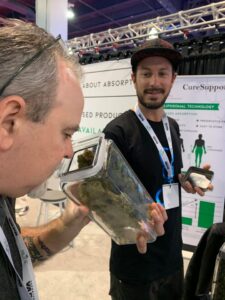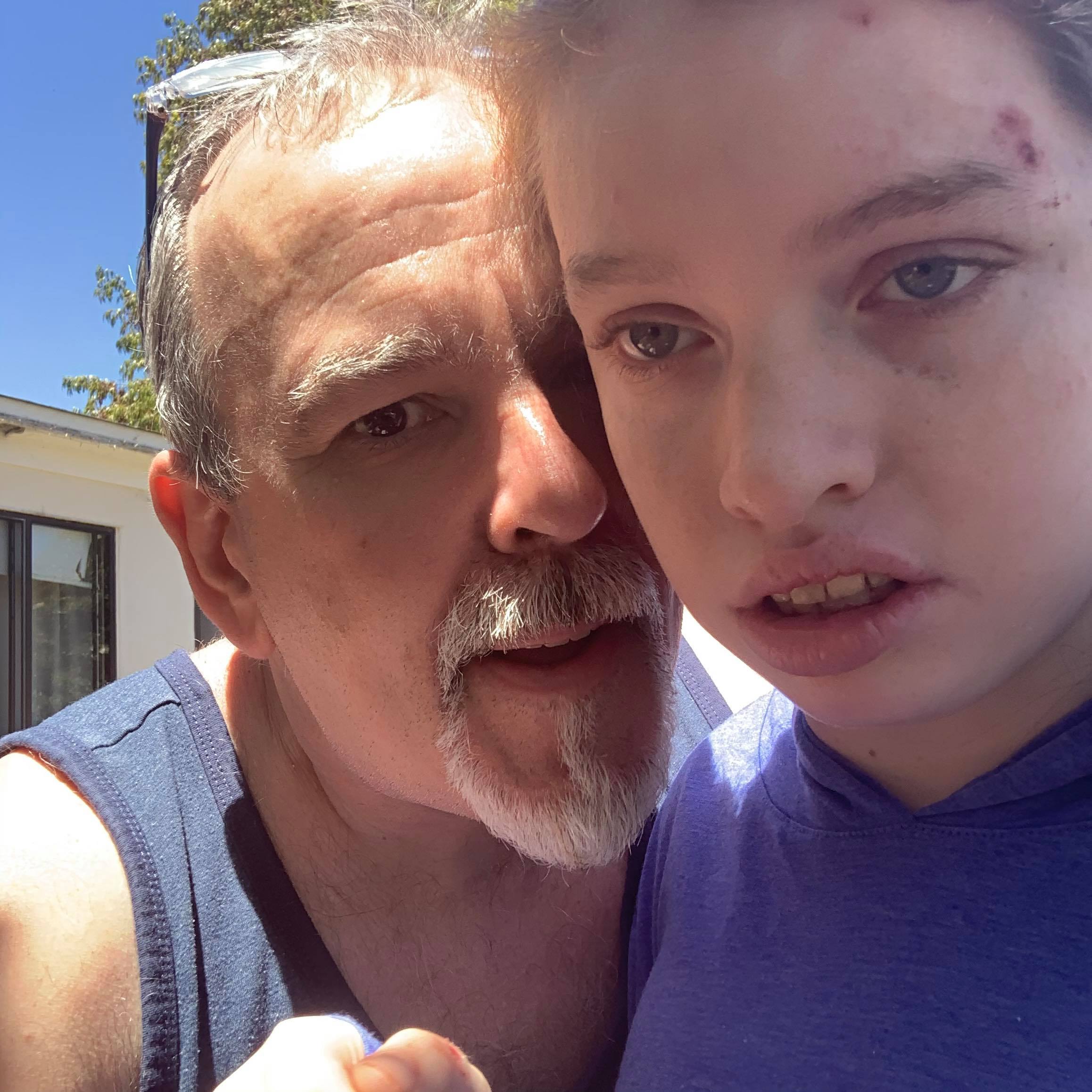Though CBG is known as a minor cannabinoid, it packs major benefits, specifically, treating inflammation
By: Veronica Castillo, Cannabis Content Writer
As more studies and information emerge, there is a trend of CBG use for inflammation. CBG (Cannabigerol), is known as the mother of all cannabinoids because it is needed for THC to exist. THC starts as CBG and without it, there would be no THC.
Though CBG is known as a minor cannabinoid, it packs major benefits, specifically, treating inflammation. Research supports that CBG:
- CBG is a non-psychoactive.
- CBG is the precursor to THCA, CBDA, and CBCA.
- CBG can reduce neuroinflammation, oxidative stress, and it has high potential as treatment for multiple sclerosis and other neuroinflammatory conditions.
- CBG be effective for patients with inflammatory bowel disease and could potentially be an agent for immune diseases.
This piece focuses on CBG and its benefits for treating inflammation , which nearly 2.1 million Americans suffer from. Mike Robinson, founder of the Global Cannabinoid Research Center, tells us why CBG actually works for inflammation. Mike has been studying and researching cannabinoids for over a decade.
Mike is a researcher looking deep into Cannabis, its cannabinoids, and its and terpenes. He has found relief from ailments such as cancer and severe epilepsy, by consuming Cannabis: THC, CBD, CBG, and other cannabinoids. He has been formulating and making medicinal Cannabis products for his clients which are sufferers of various medical conditions.
“It seems as if too many have been focusing on two cannabinoids, THC and CBD, for over a decade and there’s much more to the plant. Although minor cannabinoids aren’t as plentiful in the plant, CBG can be gained in various ways and utilized in phytomedicine as well as retail product lines.”
Interview

This interview was slightly edited for clarity
Please tell me about what you do as the founder of the Global Cannabinoid Research Center (GCRC).
“Right now, we’re an educational entity that shares research and analytics, educates on cannabinoid medicine, and works in collaboration with the American Journal of Endocannabinoid Medicine University. With them, we offer doctors, healthcare professionals of all types, and/or anyone- a 12-unit college course on the ECS (endocannabinoid system) that most never learned. Students earn a certification from the journal of medicine’s University.
The Global Cannabinoid Research Center has published a few studies as we’re young. We have one research assistant, Sarah Schweifel out of Las Vegas and we’re undergoing a planned expansion that hinges on provisional patents, registered trademarks, pending trademarks, and other IP that have been gathered.
The GCRC has already expanded, but we’ve got a beautiful plan in place that we’ll announce soon – it will include our plans for research, trials, and a soon to come commercial location.”
How long have you been intrigued by and studying various cannabinoids?
“The first time was in high school, but chemistry never stuck with me. I was interested back then in more than THC. Some of my mom’s friends always said there was more to the plant when I was a little kid, I just didn’t know. I never grew Cannabis; my friends did and- I never knew how to use it right until the last decade.
In 2013, I discovered ingestion was the key- and by accident. I didn’t even know what CBD was but due to how my life played out, I ended up moving a field of study from civil rights law to cannabinoid medicine as a compassion provider. This caused me to have to learn what some of these abstracts mean – and that meant learning various cannabinoids in detail.”
Before we get into CBG, can you tell me which cannabinoid is your favorite and why?
“CBGa is my favorite cannabinoid as I’m able to find so many uses for it. It can be converted into various other cannabinoids within the plant, and with technology we have and more emerging. As a researcher – being able to work with the mother of everything and what’s responsible for CBCa, CBDa, and THCa as well as CBG – not to exclude CBGV and so much more is always a treat.
Researching it has become an obsession of sorts.”
Now, let’s get into the mother of all cannabinoids, CBG; what should people know about her?
“We should consider CBGa to be the mother, CBG is more like CBGa’s child. It’s CBGa that I call the mother as it creates CBG.
It also creates, through its enzymatic chain of events: CBCA, THCA, and CBDA – and all the cannabinoids below them on those fancy charts, which is quite a few. Both CBGa and CBG don’t get the attention they deserve, not yet at least.
They’re powerful and research is starting to show us, as well as our own treatment outcomes. In 1996, it was Japanese researchers that first reported in journals about CBGa and its abilities, that it was the precursor to everything. Other research has shown that it has strong abilities with promise to treat serious health issues from cancers to other cellular and metabolic disorders.
It’s got heavy promise in the area of neurology, oncology, and so much more. I find it to be very powerful in conjunction with other cannabinoids and certain terpenes – as a formulator it’s all in the ratios. There’s much more to this cannabinoid than there is THC and CBD – it’s just not that simple.”
CBG is described as a minor cannabinoid but- she packs major benefits, why is she a minor?
“CBG is minor due to the small percentage of it, overall, in the various species of Cannabis. Without modification, the final outcome of any grow produces little detectable CBG, unless the plants are a little young. Genetics have made even that statement outdated, there’s strains now that have a little. Either way it will always be THC and CBD considered the major Cannabinoids as those are the two predominant plant types we see. Professionally I believe we should also establish, in breeding, CBC dominant plant types since it’;s an attractive cannabinoid that CBGa produces.”
I have read countless articles about CBG and the constant mention is that she is amazing for inflammation, what can you tell us from your research?
“There’s a lot of studies now that expose CBGa, CBG, and chief elements in removing oxidative stress. This is one area I stay in quite a bit with both CBGa, CBG, and their ability to modulate a problem almost every human and animal has.
Our bodies must maintain balance in detoxifying itself of free radicals. Oxidative stress occurs when there’s an inability for the body to release these harmful toxins that come from our environment of harm, medications, what we eat, drink, and more.
CBG and CBGa have heavy promise in releasing those toxins and in doing so, it causes a reduction of inflammation. When we use oxygen in life, which we do every moment, free radicals are generated. The more energy we use the more we make. This oxidative stress creates damage to healthy cells, tissue, and more, and causes what we all know as inflammation and pain; and that’s only to start.
When we look at the mother of all, when speaking of CBGa and CBG – we also got two constituents exerting properties that can treat immune system health. Free radicals eventually damage our cells so bad, depleting proteins and more, and even damaging DNA. So, the findings in various studies are very big on this duo of minor cannabinoids.”
Those same articles say that CBG is specifically beneficial for neuroinflammation and inflammatory bowel disease, does your research support this?
“Inflammatory bowel disease includes an array of difficult to treat health issues. CBGa/CBG have been shown to treat these and that’s great news to everyone. The research on this dates back to 2012-2013 so, this isn’t news, it’s just a hot topic in the cannabis space.
More research on this was published in 2015, 2018, on and on. CBG is by far not a new topic in the field of research. It’s an honor to be among that crowd and, as well, to see the response of patients with multitudes of health issues including IBD, using CBGa and CBG up close and personal.
Anecdotal reports show great promise, for inflammation and almost every neurological issue. A report on the use of these minors also showed these cannabinoids can outdo what others seem to think are the most important parts of the plant – THC and CBD.”
In your opinion, could someone that has been treating with prescriptions like prednisone and hydroxychloroquine find relief consuming CBG instead?
“I believe it’s easy to step on toes when you start saying cannabinoids can replace all pharmaceuticals – as we can’t pinpoint with accuracy yet in clinical trials and prove it. That barrier stops me from stating that we could replace both those drugs with CBGa or one of its offspring.
Cannabinoid medicine is so promising that THC remains off limits for the true research we need to do and in large numbers. CBD research is done in my opinion, far too much on oil and not enough on more soluble ways of use of plant constituents. At the GCRC, that’s one of our big goals and it’s also on the list of one of my pending patents.
We look at how to replace substances that are harmful like pharmaceuticals- with a new breed of them – natural plant medicines. This seems like a dream that can never come true but if we don’t start working on projects that create these now, we’ll never get them mainstream.
CBGa and CBG have so much promise that it can indeed replace, in my opinion, a plethora of what many doctors refer to as ‘medicine’. – in our home they already have.”
I consume CBG flower and I usually feel a slight buzz, a mental elevation, even though CBG is described as non-psychoactive. Can you share information on why that may be?
“I don’t believe cannabinoids and terpenes to be non-psychoactive – that’s a nice way to ice a cake so conservative people don’t feel like they’re using a plant that’s been demoralized and demonized for the better part of a century.
CBD itself, for example, is known to help in multiple ways for people with depression – this is treated by psychologists and psychiatrists. PTSD patients have reported back to me, in anecdotal cases that have been numerous in veterans as well as in myself, to have reduced symptoms including night sweats. terrors, and repetitive dreams.
When we look at only these examples- the psych of the patient has changed in a dramatic way. We don’t need sugar coating in the world of cannabinoid medicine, we need advancement based on the reality that Cannabis produces amazing properties that never should have been replaced, only made better and safer, on pharmacy shelves.
Terpenes have calming effects – all of it is psychoactive. I’m about hands on application – what does the cannabinoid do? What does this ratio or that – this terpene or that type of infusion do? Then we look at the research angle of it based on outcomes seen with eyes – and that’s important to me. I ‘m personally not a fan of speculative research, and have found great pleasure in researching CBGa and CBG hands on, to come up with some of my own findings. I look forward to sharing in the near future.”

Written by: Veronica Castillo
Visit out blog sponsors!
- Herb of Life Cultivation, LLC
- Korasana (with partner Zero Point Extractions)
- Peacock/ Wunderkind CBD
- The Botanical Joint
- The B Better Company
- The Magic Bean
- Weedgets
- Portland Ashwagandha Farm
- Thank you all for supporting the mission of this blog by taking care of the Writers! With your support, we are able to educate, inform, connect, and break stigmas. Cannabis builds community, and we are grateful to you all for being a part of ours!
Thank you Veronica Castillo and the Traveling Vegan Cannabis Writer, we enjoyed your interview and appreciate your approval for republication!
Mike Robinson,
Mike Robinson, Medicinal Cannabis Patient. Founder Global Cannabinoid Research Center. CEO of Nanobles, Inc., a nanotechnology cannabinoid medicine Corp, and Genevieve’s Dream, Inc. President, Carousel Challenge, Inc., creator and owner of Relaxation Recovery Nanotechnology CBD/CBG Brand and SuperPhymes (TM) Technology, Partner, Director of R&D, Formulator, and creator of The Source Cannabinoids “Forest Bathing”, and Former Director of Communications, American Academy of Cannabinoid Medicine.
But most of all, I’m always Genevieve’s Daddy as my number one job!


